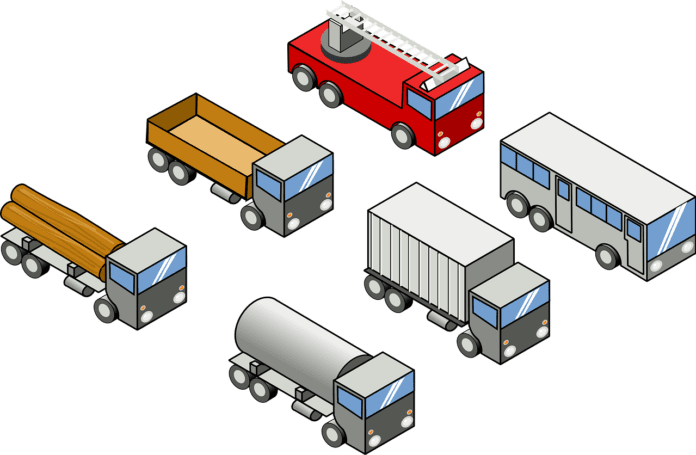Truck ? The history of cars in general and trucks, in particular, is very recent, it is about 125 years old, but the truth is that it defines an entire era both at the level of research, technological, economic, or sociological. The car’s appearance was of great importance in society. It introduced changes in the mentality of people, companies, and forms of business, and it represented a substantial change in certain styles, life habits, and relationships between peoples and cultures.
Trucks are the kings of trucking today, but it wasn’t always that way. What was the first? How was the king of kings created? We travel back in time to discover how, in 1896, Daimler showed the world the way forward.
Late nineteenth century. Horse-drawn carts are one of the most widely used means of transporting goods despite their limitations (cost of acquisition and maintenance of animals, minimal payload, etc.). In previous years, many inventors have already tried to create the ideal vehicle for such arduous work: between 1770 and 1801, the engineer Nicolas Joseph Cugnot built the first steam trucks with funding from the Government of France, intended for the transport of cannons. Later, in 1864, Siegfried Samuel Marcus, an electrical engineer born in Mecklenburg (Germany), put into operation the first vehicle powered by gasoline and oil.
The great truck invention:
two-cylinder engine instead of a drawbar
However, it is not until 1896 that what has been dubbed the first truck in history arrives. In his role as visionary, the inventor Gottlieb Daimler builds the first truck with a combustion engine.
Starting from a carriage mounted on iron-clad wooden wheels, Daimler replaces the traditional horse drawbar with an engine responsible for providing power. The era of trucks, a new category of transport vehicles, has just been born.
Pragmatism is one of the Daimler truck hallmarks, equipped with a four-speed belt drive and a two-cylinder Phoenix engine. This archetype is basically made up of a raised cab for the driver at the front and a cargo box with the legend “Daimler-Motoren-Gesellschaft Cannstatt” printed on the side.
Thus was born the first truck in history

a converted horse-drawn carriage with a payload of 1,500 kilograms. Its chassis has a complex spring suspension system that, in addition to cushioning the irregularities of the precarious roads and highways of the time, serves to compensate for the vibrations caused by the engine.
This block, with two cylinders, 1.06 liters, and just 4 hp, is known by the name of “Phoenix” and is installed in a vertical position under the rear of the vehicle.
It is an inheritance of the time’s passenger cars, and its operation is similar: it still uses a glow tube ignition system, although it already has an injection carburetor. It can also run on three different fuels. gasoline (which in those years had to be bought in pharmacies), coal gas, and oil for lamps.
The belt drive remained in the second generation of the Daimler truck, which had the engine already in the front.
According to Gottlieb Daimler, its main advantages include “the compatibility and elegance of its design, its silent and shake-free operation, and its odorless exhaust gases.”
This pioneering means of transport in its time also incorporates a gear system using pinions that allows transferring the power of the engine to the wheels, and that constitutes a precedent of the planetary axis, an element that will be distinctive and fundamental in the new generation of trucks that will arrive years later and that continues to be indispensable today.
Looking back, it’s amazing to see what the first truck ever built in the world looked like today. An example of innovation that has gone down in history started motorized road transport as we know it today.
The five-ton truck (1897) with the engine mounted on the front axle set the following models’ standard.
You know: all beginnings are difficult, especially for people ahead of their time. And yes, Daimler’s invention took a few years to be understood by society at the time (more sympathetic to passenger cars), and it did not attract a single buyer in Germany (yes, one in England). But in a few years, and with the increase in its power and load capacity, it ended up proving its usefulness and that horse-drawn carts were no longer the most efficient way of transporting goods. Trucks had become the new kings of the road.
Who Invented a Truck?
The Daimler Motoren Gesellschaft (DGM), a German company that would later register the Mercedes Benz brand, built-in 1896 what is considered the first truck in history, inspired by the steam engines of the early s. XIX.
Its inventor was the engineer Gottlieb Wilhelm Daimler (1834-1900), who, in 1872, was technical director of the firm, Nikolaus A. Otto, inventor of the four-stroke engine, and in 1882 he left this house to found, with Wilhelm Maybach, a company dedicated to the construction of internal combustion engines.
Three years later, they patented one of the first engines capable of propelling a vehicle at a certain speed and developed the first carburetor that allowed gasoline as fuel.
In 1890, they founded the Daimler Motoren Gesellschaft in Cannstatt. This would build in 1899 the first car of the Mercedes brand that after merging with the Carl Benz factory became known as Mercedes Benz.
The first truck had a two-cylinder Phoenix and used an ignition system using an incandescent tube, while the feeding was by the carburetor. It developed a power of 4 CV, and the vehicle without load could travel up to 38 km / h, an interesting speed for the time. It had a four-speed belt drive, and its load capacity was 1500 kg.
It lacked a roof in the driver’s cab and the box. It came out in two versions , with the engine in the rear and with the front engine. It should be remembered that Mercedes Benz was also the company that produced the world’s first Diesel truck in 1923.
A cargo truck is a motor vehicle designed to transport various products and goods. Unlike automobiles, typically mono-hull construction, the shapes and important elements of many trucks are built on a sturdy basic structure called a chassis or frame. Cargo trucks are normally made up of a cab, chassis, and a specific structural frame for the cargo.
Depending on each model’s specific use, cargo trucks can come in very different shapes and sizes. Some of them are especially indicated for the transport of goods by road; others may also be prepared to work in areas where traffic can be more complicated. The elements, objects, or merchandise they transport can be of any type, from animals to tree trunks, through packages, utensils, delicate pieces, etc. The type of cargo to which they are destined determines the characteristics of each truck.
A cargo truck is a motor vehicle designed to transport various products and goods. Unlike automobiles, typically mono-hull construction, the shapes and important elements of many trucks are built on a sturdy basic structure called a chassis or frame. Cargo trucks are normally made up of a cab, chassis, and a specific structural frame for the cargo.
Depending on each model’s specific use, cargo trucks can come in very different shapes and sizes. Some of them are especially indicated for the transport of goods by road; others may also be prepared to work in areas where traffic can be more complicated. The elements, objects, or merchandise they transport can be of any type, from animals to tree trunks, through packages, utensils, delicate pieces, etc. The type of cargo to which they are destined determines the characteristics of each truck.
Truck Past (Truck History)
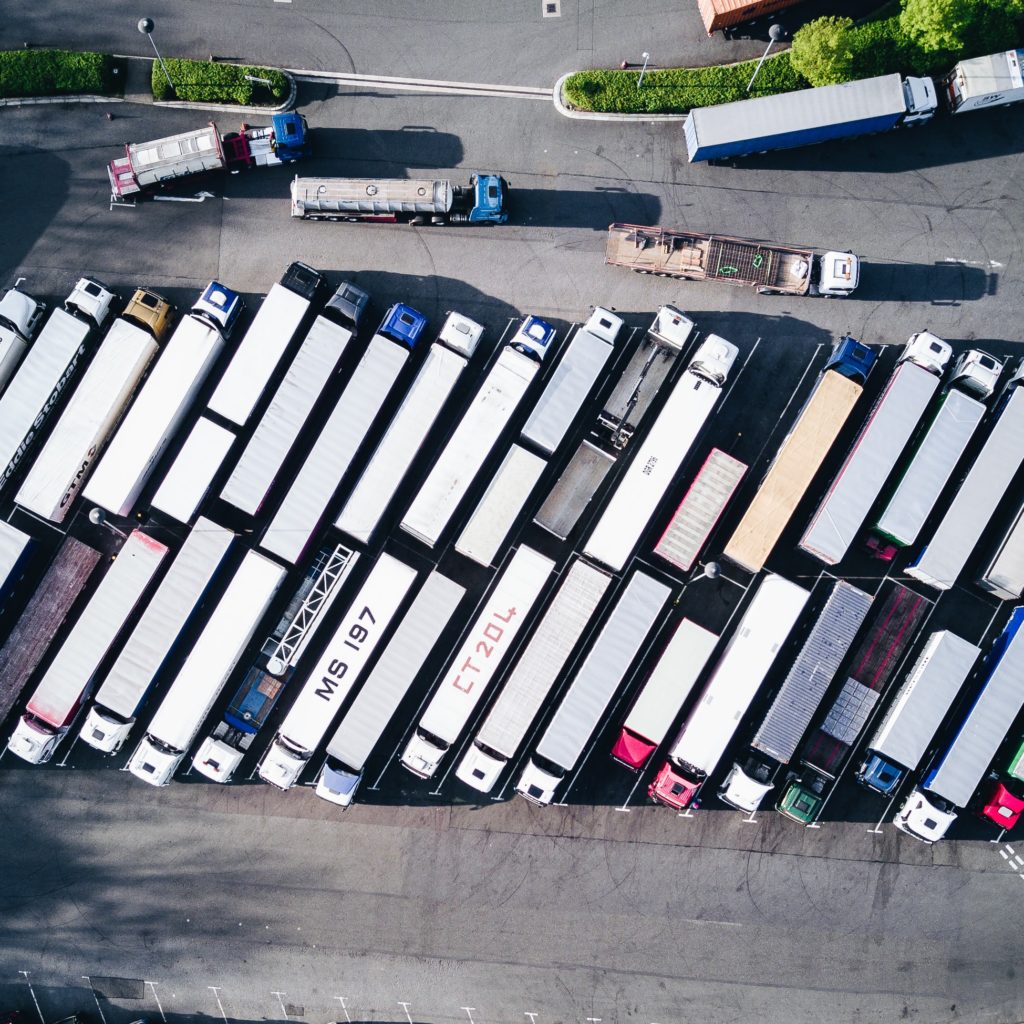
Gottlieb Daumler’s invention, built by Daimler Motoren Gesellschaft, was inspired by steam engines from the early 19th century. Although the driver’s cabin was uncomfortable and had no cover, like the cargo compartment, this model from the DMG company was the pioneer and opened the doors to automotive progress.
At the turn of the century, at the beginning of the 20th century, more powerful trucks capable of reaching higher speeds came onto the market, with larger boxes for loading and more comfortable cabins, not only manufactured by Daimler Motoren Gesellschaft itself, but also by others. Firms like the North American Winton Co. are based in Ohio.
Later, new models would arrive designed for war – military trucks of great toughness, easy to handle, and capable of withstanding difficult terrain conditions -, trailers and other more sophisticated machines for new features. Until the end of the 19th century, the shape of all trucks was similar. They looked (and were, in fact) motor carriages. The first trucks were steam-powered, although the electricity that was becoming fashionable soon led to the manufacture of all kinds of vehicles powered by it, such as trams, trolleys, and trains. Relatively practical batteries were also discovered, and with them, the truck and the electric bus.
But the first decades of the truck spun with a set of problems of some complexity, there were no lubricants capable of protecting such advanced engines, the metallurgical technique had not yet discovered high-strength steel, thermodynamics, and fluid dynamics were sciences that they were beginning to emerge.
This situation defined conditions that demanded a lot of effort, tests, and experiments, but which made the investigation relative’s progress and the finding of solutions that would make it possible to find an engine clearly superior to the others. The steam engine was highly evolved and inexpensive to maintain, but its life was limited, it was slow, heavy, dangerous almost by accident, and it took a long time to heat the boilers to start it.
The electric motor had the same drawbacks as the current batteries. The thruster was clean, maintenance-free, small, powerful, and exceptionally long-life, but the batteries were expensive, polluting, heavy, large, with little storage capacity, daily maintenance, and concise life. That is why its use was limited to urban distribution and little else.
The trucks of that time used mainly 2 and 4 cylinder engines, had a load capacity of 1500 to 2000 KG.
In its beginnings, the diesel engine could not impose its hegemony because there was no injection pump of reasonable size. Thus, to further regret Rudolf Diesel, its engine could only be used in large installations. Until the First World War, the various types of engines evolved to a great extent. Although it was its most suitable propulsion without being very clear, the gasoline engine was already beginning to gain ground.
Truck Present
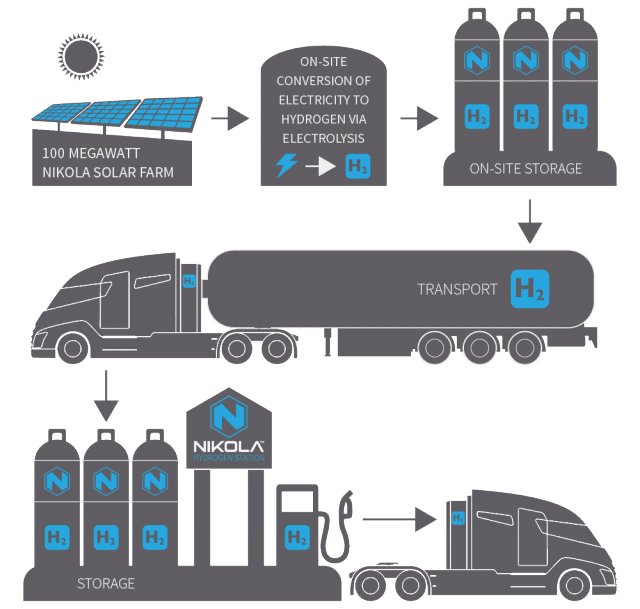
The trucks offered by the different brands have been specialising and taking on a series of characteristics of the work to be done.
The evolution from a simple box to the most suitable shape for the material to be transported dangerous, liquid, refrigerated, in a continuous movement that prevents setting, open, closed, with a crane, etc. Their design, technology, and safety in general varied.
There are all kinds of trucks and various sizes, from the car-sized pickup to road trains, to the 200-ton off-road truck used in mining.
The trucks offered by the different brands have been specializing and taking on a series of characteristics of the work to be done.
The evolution from a simple box to the most appropriate shape for the material to be transported; dangerous, liquid, refrigerated, in a continuous movement that prevents setting, open, closed, with a crane, etc. Their design, technology, and safety in general varied.
There are all kinds of trucks and various sizes, from the car-sized pickup to road trains, to the 200-ton off-road truck used in mining.
The large vehicles are designed to transport goods with a semi-trailer, like those we see on the road every day.
It must be said that trucks are also the smallest rigid vehicles used by small companies and entrepreneurs in their businesses to deliver goods or distribute products.
The burden of the truck is what characterizes these vehicles. There are tanker trucks, refrigerators, heavy construction vehicles, etc.
Types of trucks
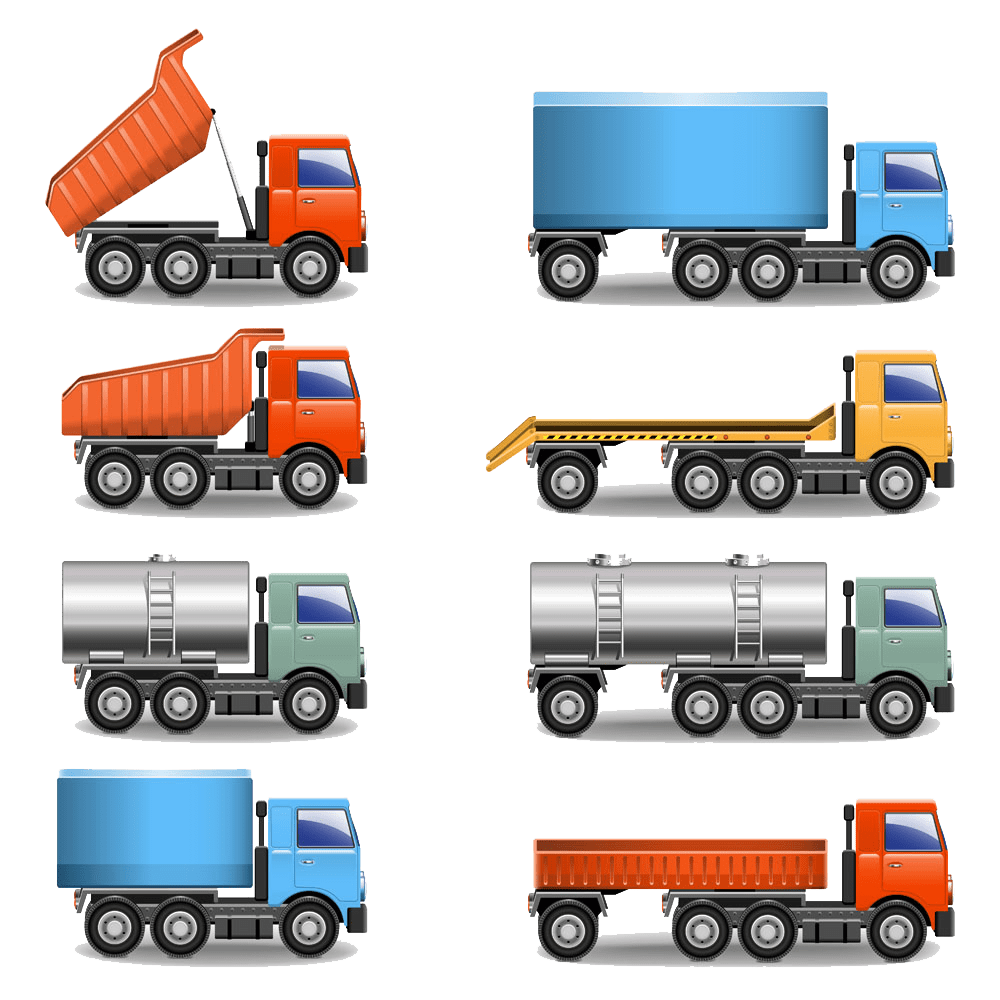
They are defined as vehicles with four wheels or more, which are designed for the transport of goods. Generally, they are heavy vehicles with a GVW of more than 3,500 kilos, whose cabin is not integrated into the rest of the bodywork and equipped with a structure designed to transport the goods.
Actros axle
In the axle range for the new Mercedes Benz Actros, you will always find the ideal solution.
The HL 6 single reduction hypoid rear axle is fitted as standard in conjunction with engines up to 480 hp. Compared to its predecessor, this axle weighs less and contributes to lower fuel consumption. By opting for a suitable gear ratio in the rear differential, it is possible to equip the trucks with a direct gear change.
The Volvo I-Shift truck offers a 12-speed transmission with split and range shifting. The split is integrated into the base gearbox. The gear change section is the planetary type and is located behind the base unit. The base unit lacks mechanical synchronization. Instead, the engine and transmission are synchronized with each other electronically via the engine management system.
Axle load
Equalization of axle load is performed on the front axles of trucks, with four axles. When overcoming an obstacle, the load is distributed among the axles, preventing it from concentrating on just one.
Truck future (Electric Truck)
The future of trucking has made almost as expected when it comes to automating trucking. In contrast, autonomous passenger cars have proven to be much more difficult than expected, and growth forecasts are several years behind.
The future of road transport is not limited to electrical and autonomous. In addition, the range of connected services continues to expand, including predictive maintenance, driver monitoring, IoT-based tracking, and tracing solutions, streamlined workflows, vehicle infrastructure-based driving assistance, and wireless updates. Also, the sharing economy is increasingly affecting the world of trucks as digital freight services take advantage of the available capacity to increase revenue per truck and reduce transportation costs per ton.
Types of Trucks and Used
To put order among so much diversity, it is possible to establish common characteristics that define these vehicles and organize them. We assume that trucks are defined as vehicles with four or more wheels designed to transport goods.
Mini Truck (Tempo MCV)
Mini trucks are very popular with buyers due to their powerful new generation engine that produces best-in-class horsepower and mileage. In addition, the minivan features a car-like function with a hug seat and an ergonomic design with all the controls easily accessible to the driver. Other than that, it has an outstanding carrying capacity, which is against most people of the same era.
Why are mini trucks used?
Mini trucks are used to complete small daily family or business tasks in a timely and low cost.
ICV Truck Intermediate commercial vehicle
This segment was developed to bridge the gap between the light commercial vehicle segment and the heavy commercial vehicle segment, hence the name light and intermediate commercial vehicle segment. These vehicles are available in various variations, including smaller and larger wheelbases, to provide larger and smaller cargo areas according to customer needs. These vehicles are used in market freight, cement, sand transportation, gasoline and diesel tanker trucks, grain, government sector, and other applications.
LCV Truck (Light Motor Vehicle)
The LCV is known as a light commercial vehicle rated from 3.5TGVW to 7.5TGVW. LCVs are used for short-distance and last-mile deliveries.
A light commercial vehicle is a vehicle with at least four wheels,
Goods. The mass expressed in tons (metric tons) is that of a light commercial vehicle.
Heavy truck. This limit depends on the country and the definition of the expert 3.5 tons and 7 tons.
Why and where is LCV truck used?
The use of LCV trucks is increasing day by day due to low toll, highly advanced fuel capacity, high speed and low rental freight .
HMV Truck (Heavy Motor Vehicle)
Heavy Motor vehicle is one of the best transport truck, which is very commonly used. It is used for many construction sites, transport of goods, and other essential materials.
Open Platform Truck
This type of truck is characterized by having the platform where the load is placed totally or partially uncovered since, in some cases, the sides can be covered depending on the risk of the merchandise moving. This type of vehicle is usually used to transport heavy and large volume merchandise, such as construction materials.
Garbage Truck
Garbage trucks have played an important role in helping us eliminate the waste we generate. Before the invention of automobiles, garbage was often disposed of near everyday life. Garbage was thrown into the sewer, piled up on the street, and floated on the river.
All garbage tracks may look the same, but choosing the right track style can make garbage collection faster and more efficient. There are many types of trucks to meet various needs, from trucks where workers need to load waste into the hopper to models that do everything automatically.
Hazardous waste truck
They are used to transport hazardous waste on the road to landfills. It is intended for the collection and disposal of household and municipal waste and hazardous waste. The unique design of the garbage truck allows you to dump the garbage directly into the garbage compactor. These small dump trucks can also dump garbage in landfills.
Container Truck
These trucks are those that carry their cargo or merchandise totally or partially uncovered. The truck is used to transport construction materials.
Self-loading Trucks
A Self-loading Trucks is a vehicle carrier with a Jackie mechanism that tilts the vehicle body at the rear of the cab and can load large construction vehicles and equipment.
Trailer Truck

The trailers or trailers are types of trucks that can not move on their own, coupled to a motor vehicle. They can be of very varied dimensions, and the largest reach a Maximum Authorized Mass of 750Kg.
Semi-trailer truck

Today’s semi-trailer trucks often operate as part of domestic or international transportation infrastructure to support container cargo transportation. Various types of flatbed train carriages have been modified to accommodate wheeled or wheelless cargo trailers or containers.
Flatbed Truck

Generally, these trucks are used to transport heavy loads that are not endangered in bad weather or rough roads. Its unique body design is perfect for luggage that is too wide for a closed body truck.
Tanker Truck
Tanker trucks are usually semi-trailers. Bolt-on hinged lidded inlets provide access for loading, inspection, and cleaning. If the tank is parked on a slight slope, the rear 3 inches (8 cm) outlet valve provides complete drainage. Some tanks have a central drain, and the bottom of the tank is sloped for drainage. The valve is easy to inspect and has a cover.
Dumper Trucks

Dump trucks, mainly used at construction sites, are used to transport various loose materials such as sand, soil, and gravel. Normally, the damper carries the luggage to the container in front of the driver and uses a hydraulic system to tilt the container to dump the luggage. Today’s dampers can be used to transport different materials into the site in different projects.
Concrete mixers Bulker Truck
Concrete trucks are considered the most profitable type of concrete mixer truck. In addition to mixing concrete, you can also include raw materials that need to be mixed to make cement. In addition, it automatically loads, mixes, and produces the specific levels of concrete needed for construction projects, eliminating waste hazards, and using exactly what you need.
Refrigerated Truck
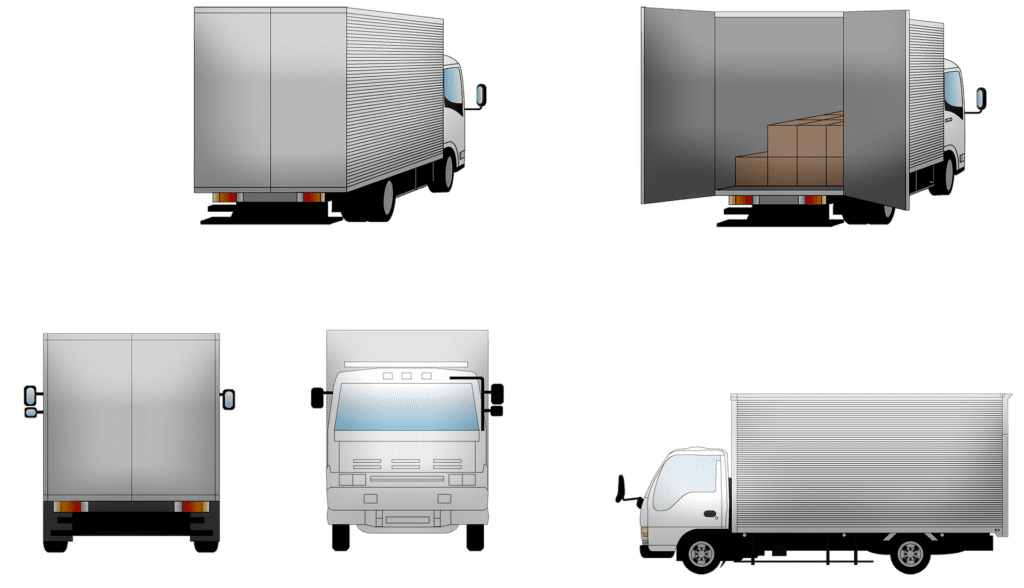
Refrigerated trucks are those that are used to carry out the land transport of refrigerated goods. Within this type of truck, we find refrigerators, refrigerated or insulated ones, depending on whether you have cold generation systems or whether they only have temperature insulation from the outside. Therefore, these trucks are usually the most used for transporting food products that require cold storage.
Car Carrier Truck
Designed for efficient transportation of cars (pure car transporters) or various cars, trucks, tractors, buses (pure car/truck transporters). A typical transport vehicle cargo access/transfer system consists of a rear ramp, side ramps, an internal ramp with a deck, and a lift-off deck. Vehicles enter the ship directly and reach various decks through the internal ramp system.
Heavy Haulage Monster Truck for oversize load

It can transport heavy civil engineering equipment, construction equipment, prefabricated houses, oversized concrete beams, generators, turbines, transformers, power plant parts such as modules, tugboats, and other vessels. And the production line.
Truck Advantage

The fleet of trucks is one of the safest and most efficient road transport systems. Many logistics companies use this system to transport their products, both nationally and internationally. Sectors such as construction, food, and the automotive industry are some of the ones that benefit the most from this system.
- Fast and inexpensive door-to-door service
- One of the main advantages of the truck as a transportation system is that it provides door-to-door service. Also, it is a very economical transport system and ideal for short distances. It can be said that it is the best means to transport merchandise in 24 hours at the national level.
- In addition to fast and cheap delivery, it is a straightforward transport system to manage and reserve by the logistics companies. An easy and flexible service can be used anywhere in our country since the roads reach all points.
- On the other hand, trucks can transport any type of merchandise and adapt to each client’s needs. If bulky transports are required, there are trucks perfectly qualified for it. The same happens if the load to be transported is small.
- Perhaps the only drawback that this system can have is that it is not the most useful for transporting goods internationally. In this case, transport by air can be more profitable, faster, and more efficient.
- Most economical form of transport. Compared to other forms of transport, its cost is much lower. In fact, it is the cheapest form of freight transport than air or sea transport. Within the road, transport trucks require no specific structure (ports, railway stations, and airports) to perform transport are included. This greatly reduces the final price, since only the vehicle is needed to perform the transport service.
- Flexibility and greater freedom. Road transport is the preferred means for logistics companies and suppliers, and users since it allows the transport of a wide range of products of all kinds regardless of weight and size. This facilitates transportation to all municipalities (large and small) and reaches a wider audience. It is also the ideal transport for perishable goods (food, seafood, meat, and fish) since it allows access very comfortably and, most importantly, quickly to the final facilities of the recipient.
- Security of the merchandise. Freight transport is characterized by moving materials of all kinds from fragile materials, construction material, heavy vehicles such as cranes or trucks to dangerous goods or even hydrocarbons and food products. This versatility does not limit freedom of movement since the used vehicle, in this case, the truck, can be adapted to guarantee optimal safety and protection conditions, even in the case of moving materials and toxic and harmful elements to health transport of dangerous goods. Other means of transport, such as air, are more difficult to operate, if not almost impossible, to move dangerous goods. It is important to note that road transport drivers must comply with current regulations and are responsible for the load and merchandise.
- Location and monitoring. This point is especially related to the previous one. Security increases thanks to the incorporation of geolocation systems (GPS), which allows knowing at all times where the merchandise is and anticipating problems such as road cuts, traffic, or external agents such as temporary snow or rain.
- Direct and uncut. Flexibility and versatility allow the product to arrive directly from the customer to its final destination thanks to a direct service depending on the type of product.
- A wide network of coverage and speed. Currently, the national road network represents 10% of the transport carried out by road within the European Union. As if that were not enough, it is the second country that moves the most tons (tn) in the Old Continent. The national network allows transport, in addition to being accessible, to be fast and punctual. You have to think that punctuality is an essential factor highly valued by customers when selecting our services. The time flexibility of road transport, especially in short and medium distances, is the best in the logistics sector.
Truck Disadvantage

Limited capacity. This type of transport allows us to move more restricted quantities of packages than other transport, such as sea and rail, however, it offers greater flexibility.
Distances. Trunk transport is more limited than others in terms of long distances, air or rail transport, on the other hand, are faster and better for very long distances. However, these distances allow this type of transport to send orders in different countries. Therefore, different orders are completed on the same trip.Contamination. The type of transport emits waste and pollution, both atmospheric and acoustic.
Traffic congestion. In many areas, mainly in access to cities or industrial estates, traffic jam areas may delay the measures.
Restrictions. In each country, the limits and traffic regulations are different, and in this type of transport, they can only maneuver within limits established by law.
Worldwide Best Heavy Haulage Trucks Manufacturing Companies :-
- Ashok Leyland
- BharatBenz
- Cat
- Daimler AG (Mercedes-Benz)
- Freightliner
- Unimog
- Western Star
- Fuso
- Isuzu
- Navistar International
- Dongfeng
- Tata
- Volvo
- Mack
- Renault
- UD Nissan
- Volkswagen Group
- MAN
- Scania
- Caminhões e Ônibus
- Hino
- Paccar
- DAF
- Kenworth
- Peterbilt
- Iveco
Tax Collection and Government Revenue for Truck

Transportation plays a crucial role in the economy; it is a key factor in determining costs for the different goods and services marketed in an increasingly demanding and changing market. Its role in the industry is of utmost importance for transferring supplies, raw materials, and finished products for various industries and clients in national and international territories.
Different countries have different taxes on the vehicle and their movements. The trucks are one of the major sources of government revenues. The tax collection on trucks is crucial for the government and the development of the nation.
Truck Impact Countries Economy

Have you ever wondered what would happen if trucks ceased to exist? The importance of trucks in the economy is such that companies of all sizes depend on the transportation industry to maintain fast delivery times and offer products throughout the country. If there were no trucks, supermarkets, stores, and shops would be empty, goods could not be transported, and the economy would stall.
Transport is an economic sector of growing importance, not only because it contributes to improving the competitiveness of our country, but also because it supports the development of activity in other sectors such as industry, commerce, and tourism, to mention only those with greater weight in the productive fabric of the Spanish economy.
This relevance increases if we consider the process of globalization and internationalization that we are experiencing, which requires greater capacity to meet the growing volume of commercial exchanges on a world scale. The greater openness of the economy, together with the greater international competition, implies a more flexible, reliable, and faster supply system. For this, the road transport sector is a fundamental result.
It supports local development and enhances the country’s growth due to the opening of markets that it makes possible. Thus, when local demand decreases, distances are minimized thanks to freight transport, and geographical boundaries disappear.

Regional economies find in this service an opportunity for diversification and expansion. Freight transport is, in this way, a means of connecting producers with consumers. There is a proven relationship between this activity and social and economic development. The mobility of goods gives consumers the possibility of acquiring an increasing variety of products of higher quality. As we anticipate, borders disappear.
In addition to the obvious economic benefit, genuine employment derived from freight transport has an impact on individuals, families, and communities. In line with what the International Labour Organization expresses, participation in economic activity contributes to fulfillment as an individual. As in a waterfall effect, communities benefit from the integration and well-being derived from satisfied living standards.
The main functions of trucks in the economy
Transportation of raw materials and finished goods and final products

Trucks make their first contribution to the economy by delivering raw materials to manufacturers. For example, trucks transport raw materials from mines, quarries, farms, and logging to factories that need the materials to make products. Later, the finished products travel, mostly by trucks, to wholesalers and retailers who sell those goods to the final consumer.

The importance of this type of transport for boosting the national economy. In fact, we are the fifth country in the EU where road transport takes on the most prominence.
Truck Accident Increase

Truck drivers are held to higher standards than private drivers because they hold commercial driver’s licenses, which means they should be more aware of how distractions can interfere with driving. Even so, distracted driving remains one of the most common causes of truck accidents.
Distractions

Distractions that affect truck drivers and increase the number of accidents in this category include eating and drinking while driving, manipulating the radio or GPS, reaching for objects on the ground or in passenger seats, and observing situations in the car.
Fatigued Driving

Truckers have demanding collection and delivery schedules to meet, and many of these days are held at night. These commercial drivers have legal limitations on the number of hours they can drive in a week, yet many ignore these. Today it is more difficult for truckers to ignore this rule due to a new electronic logbook requirement.
Unhealthy Habits

Most drivers are at the mercy of fast food. In some cases, the driver can find a healthy meal at the restaurant at one of the designated bus stops. However, drivers must try harder to eat healthily and get enough sleep.
Reckless Parking

With the lack of parking zones and the requirement for ELDs, drivers who have driven the limit of hours allowed are not allowed under the law to drive any longer to find parking, forcing them to park in inappropriate zones and increasing their chances will truck accidents occur.
Conclusion
The transportation industry is an integral part of the national economy. Virtually every industry relies on cargo trucks for the delivery and transportation of materials or products. Look around your home or office. Chances are, every item – from the furniture to the clothes you wear to the food you eat – has been inside a cargo truck.
Most aspects of everyday life are only possible due to the hard work of the drivers of these types of vehicles. For this reason, they too are important for the trucking industry to run smoothly and efficiently.
